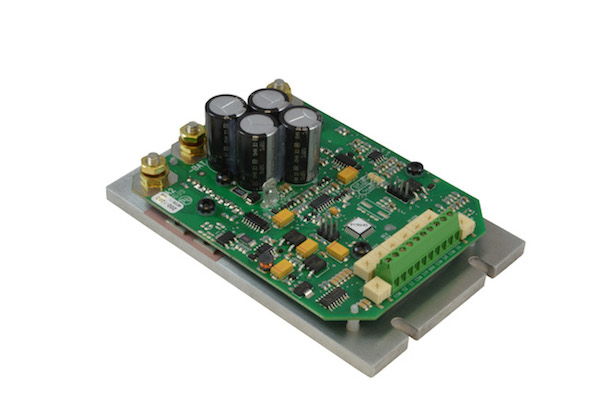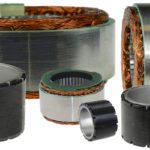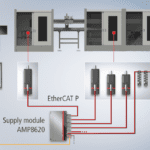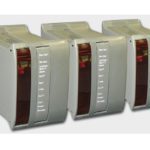American Control Electronics (ACE) introduces the new DCR300-60 and DCR600-60 Series, microprocessor-based, low-voltage PWM drives for brushed dc motors up to 24 and 48 Vdc, respectively. The microprocessor allows for custom programming to fit specific OEM requirements, potentially eliminating the need for a PLC and supporting devices. Drives can be easily programmed for use in the field without trim pots, saving time and money on installation, calibration, and field support.
The drives are rated for 30 A continuous operation or 60 A for one minute. These regenerative controls are capable of braking or reversing on the fly, without the use of braking resistors or motor lead swapping. The drives are equipped with a brake output that can be used to power electromechanical brakes or an external run status LED. There are two on-board LEDs used to communicate run status and fault conditions. Jumpers are used to select between speed or torque mode operation, as well as unidirectional or bidirectional control with a 0 to 5 Vdc analog signal. Protective circuitry helps shield the drive from shorts on the armature output, and a pre-charge circuit limits in-rush current to protect the power contacts.
Features of the DCR300-60/DCR600-60 Series include:
- Input voltage: 12/24 Vdc and 36/48 Vdc
- Output voltage: 0-12/0-24 Vdc and 0-36/0-48 Vdc
- Maximum current: 30 A (continuous operation)
- Peak current: 60 A (1 minute)
- Enclosure: Chassis
- Braking type: Regenerative
- Reversing type: Regenerative
- Potentiometer Kit 202-0182 included with purchase
For more information, visit www.americancontrolelectronics.com.







Leave a Reply
You must be logged in to post a comment.